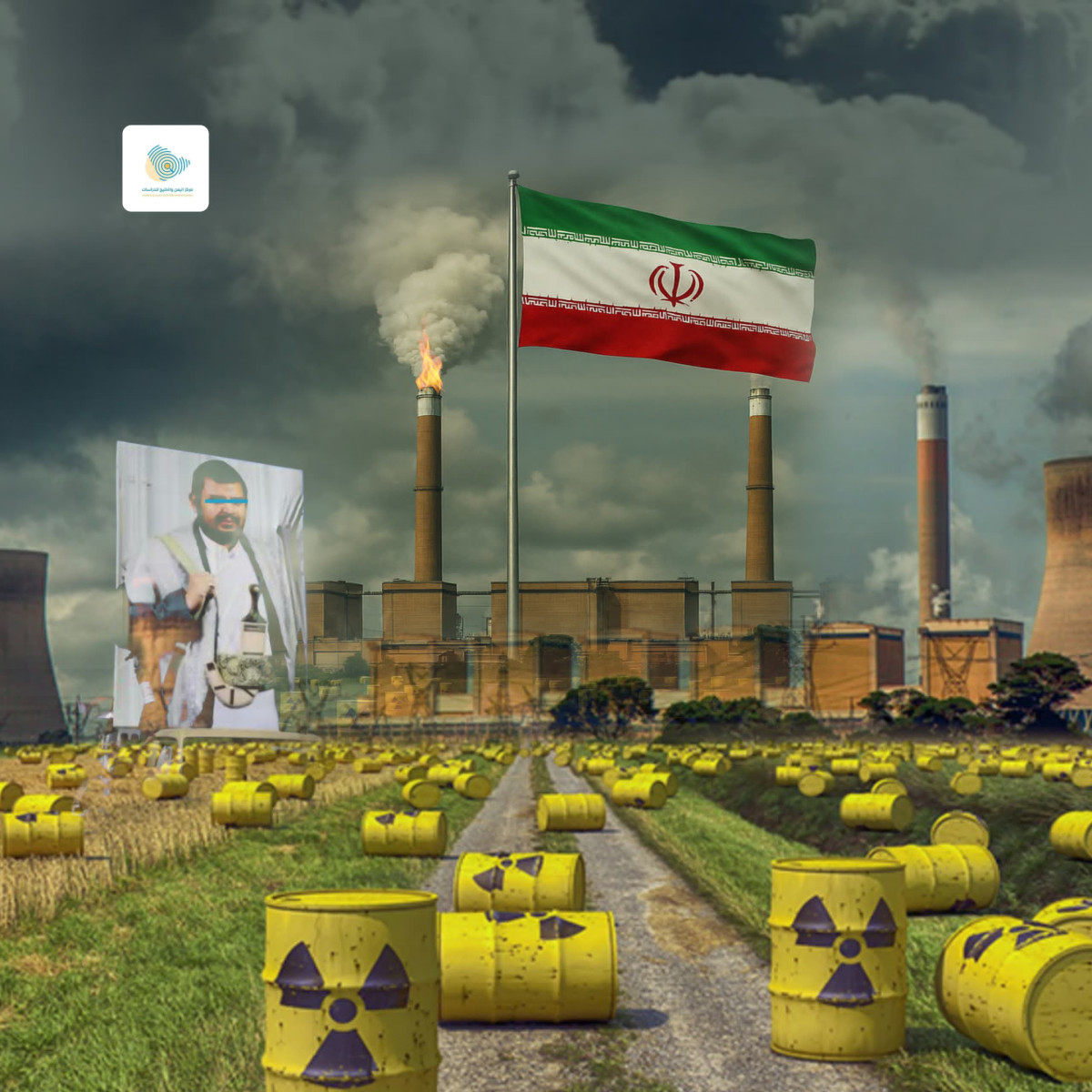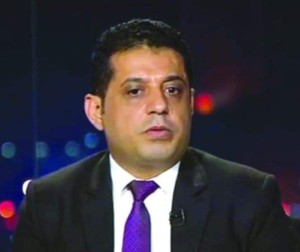Crisis-Ridden Instruments: Limitations of Iran’s Use of the Houthis Amid Nuclear Programme Pressures
- 21 Apr 2025



Iran faces escalating international pressure over its nuclear programme, set against a shifting regional and global landscape and a U.S. administration adopting a more uncompromising posture toward Tehran. As Iran’s regional clout diminishes, driven by setbacks experienced by its affiliated proxies in Lebanon and Syria, alongside a temporary reduction in the operations of pro-Iranian factions in Iraq, Tehran finds itself at a strategic crossroads. It is compelled to formulate alternative leverage instruments to recalibrate its position at the negotiating table and to avert the wholesale erosion of a regional deterrence framework it has meticulously cultivated over the past two decades.
In this context, the Houthi group emerges as one of Iran’s most active and adaptable proxies, offering Tehran an indirect yet potent operational platform to disorient its adversaries, particularly across critical maritime chokepoints such as the Red Sea and Bab al-Mandab. Amid escalating U.S. threats, most notably under President Donald Trump, to resort to military action against Iranian nuclear facilities, the strategic utility of the Houthi card has assumed heightened importance within Iran’s strategic calculus, serving as a field-based pressure instrument that can be activated without triggering a full-scale confrontation.
The relationship between Iran and the Houthis has evolved from mere political and logistical support into an advanced operational partnership, positioning the group as one of the key pillars of Iranian influence in the region, particularly in light of its growing involvement in major regional files such as the conflict in Gaza. Against this backdrop, this paper explores and analyses the limits of Iran’s utilisation of the Houthis as an instrument of strategic pressure, and examines how this deployment affects the trajectory of nuclear negotiations between Tehran and Washington, amidst the current regional and international transformations.
The Role of the Houthis in Iran’s Regional Strategy
Iran regards the Houthi group as one of the vital field instruments within its regional strategy, particularly amid escalating regional tensions. Faced with a steadily shrinking margin of manoeuvre in most of its traditional spheres of influence, Iran views the Houthis as an effective and relatively low-cost means to recalibrate the regional balance of power. The Iranian leadership perceives Houthi operations, especially those targeting strategic maritime routes, as a pressure lever that enables the projection of continuous strategic threats against a vital artery of global trade. This, in turn, reinforces Tehran’s bargaining position in the nuclear file, while simultaneously presenting the Houthis as a force capable of systematically and sustainably undermining regional stability.
Houthi operations targeting commercial vessels linked to Israel or the West also serve a dual-purpose function: on one hand, these attacks generate security and economic disruption for Western powers; on the other, they contribute to reinforcing Iran’s image as a state capable of influencing international dynamics through its proxies without engaging in direct confrontation. In this sense, the Houthi group is not merely a local militia with limited objectives. Still, it is a regional actor integrated into the broader architecture of Iran’s comprehensive strategic deterrence framework.
Tehran’s utilisation of the Houthis extends beyond purely military purposes, employing them as a flexible bargaining chip in managing its relations with major powers, particularly the United States. By igniting tensions in vital maritime corridors, Iran seeks to convey a clear message: the stability of these routes cannot be achieved without addressing the broader Iranian dossier, especially its nuclear file. In other words, Iran brandishes the Houthi card as a persistent threat to global trade, while simultaneously offering “maritime stability guarantees” as a counterweight, one that can be traded for concessions at the nuclear negotiating table.
However, this mode of utilisation carries significant strategic risks. The escalation of Houthi activities has provoked extensive military responses from Washington and its allies, thereby disrupting Iran’s calculations and putting its negotiation strategy at risk. Moreover, excessive reliance on the Houthis has reinforced Iran’s image as a state sponsor of instability, potentially weakening its international standing and bolstering calls for further isolation and sanctions. Thus, Tehran’s strategy appears fraught with contradictions: while it yields short-term tactical gains, it may accumulate long-term strategic losses.
Strategic Limits of Leveraging the Houthis as a Tool of Pressure
Although Iran views the Houthis as a strategic instrument that allows it to stir the regional dynamics, particularly in the Red Sea and the Bab el-Mandeb Strait, this leverage has increasingly encountered mounting constraints and structural challenges, significantly diminishing its ability to exert the desired strategic influence. These limits and challenges stem from a complex interplay of factors, whether on the military, diplomatic, or even internal Iranian calculation fronts.
U.S. Military Escalation and the Threat to the Houthi Card: The ongoing air and missile strikes by U.S. forces against Houthi military sites and infrastructure mark a qualitative shift in the U.S. strategy towards the Yemeni issue. These strikes are not mere tactical, transient responses; they represent a strategic transformation in U.S. policy, shifting towards an active and sustained deterrence approach. This is reflected in the systematic targeting of the Houthis' military capabilities and logistical infrastructure in executing their maritime operations.
The strategic message here is clear and decisive: Washington is no longer content with diplomatic warnings or the mere threat of sanctions. Instead, it is actively and practically working to neutralise and undermine the Houthi card as a strategic instrument for Iran, particularly after Houthi operations escalated into a systematic threat to international shipping lanes and trade, directly impacting the strategic interests of the United States and its allies in the region.
In this context, Washington’s decision to deploy two U.S. aircraft carriers and bolster its military presence in the region is viewed as more than just a conventional display of power. It serves as a practical affirmation of a comprehensive maritime and air deterrence umbrella, making the use of the Houthis as a strategic pressure instrument an escalating risk that could backfire on Tehran itself. The Iranian leadership increasingly recognises that continued reliance on the Houthis could expose it to direct confrontation with Washington, a scenario Tehran is keen to avoid.
Iran’s Dilemma with Regional Allies: While Iran pursues an expansionist policy through “proxy influence” across several countries, its relationship with the Houthis has become a growing strategic complication in its regional posture. The Gulf states, led by Saudi Arabia and the UAE, despite their desire to neutralise the Houthi threat, are currently reluctant to engage in an open conflict that could lead to a military drain similar to the scenario of past years.
This reality places Iran in a precarious position: it cannot abandon the Houthis, as they are an integral part of its regional strategy, yet it simultaneously recognises that continued, unconditional support for them will jeopardise the fragile understandings it seeks to mend with its neighbouring states. Therefore, the dual pressure from both adversaries and allies renders the Houthi card less flexible and increasingly perilous.
Internal and Logistical Limits of the Houthis: On the operational and field level, the Houthis face internal and structural challenges that are no less significant and dangerous than the external and regional pressures. These challenges range from a gradual erosion of their popular base and social support to increasing complexities in funding and supply chains, alongside the exposure of strategic sites and vital military bases to precise, targeted strikes. This makes the group less capable of executing high-impact operations without incurring significant military and human costs.
The noticeable shift in the rules of engagement, along with Washington’s reliance on precise intelligence and a methodical targeting of leadership and command-and-control centres, has significantly reduced the Houthis’ manoeuvrability and freedom of movement. They are now under strict intelligence surveillance, making any new military escalation a carefully calculated risk, fraught with potential strategic losses and consequences.
Multiple reports indicate that the repeated American strikes have destroyed a significant portion of the Houthis’ missile and drone stockpiles, forcing the group to reposition its forces and alter its military strategy. This has negatively impacted their ability to carry out sustained and impactful attacks in the Red Sea.
Iran’s Strategy between Escalation and Containment
In light of the ongoing and systematic military escalation against the Houthis by the United States and its allies, Iran now finds itself at a highly complex and delicate juncture in its regional strategy. The developments on the ground have swiftly exceeded the bounds of the “calculated disruption” that Tehran had long managed and directed to serve its strategic agenda. With each new US strike targeting the military infrastructure and operational capabilities of the Houthis in Yemen, the effectiveness of this card, which Iran has long considered one of its key indirect leverage points, progressively diminishes. This decline is evident in the intricate nuclear negotiations and the entangled regional conflict dynamics.
However, the strategic predicament Tehran faces today extends beyond the Houthis. What has further complicated the situation is the explicit and direct statements from U.S. President Donald Trump, who has openly and unprecedentedly threatened the possibility of direct military strikes against Iran. This represents a qualitative shift in the US deterrence rhetoric, moving from indirect threats to a direct confrontation posture. This threat cannot be ignored or downplayed by decision-makers in Tehran, as it effectively shifts the locus of escalation from peripheral actors (the proxies) to the centre (Iran itself). The issue is no longer simply about bearing the cost of exhausting Iran’s regional proxies; the discourse is now openly focused on Iran as a potential and direct target for any significant new escalation in Houthi operations, compelling Iranian leadership to conduct a comprehensive and fundamental reassessment of its strategy, which has relied on operating through proxies.
The greatest challenge Iran faces today is that if it continues to support the Houthis at the same pace, it risks opening the door to a direct confrontation with Washington, which Tehran seeks to avoid, especially amidst its ongoing efforts to revive nuclear negotiations and alleviate the burden of economic sanctions. However, if Iran were to publicly scale back its support for the Houthis, it would risk weakening its regional position and sending signals of vulnerability to both its allies and adversaries alike.
Iran stands at a crossroads today; it either risks a major escalation with the United States or retreats and gradually loses its bargaining leverage. In both cases, the equation is no longer what it once was. The regional environment has fundamentally shifted, and the international community no longer tolerates ongoing provocation and escalation without consequence. Washington, in particular, has begun to speak with unprecedented clarity and frankness, using the language of direct military response.
Conclusion
An in-depth analytical reading of Iran’s use of the Houthi group reveals a fundamental strategic paradox that warrants reflection. On one hand, Tehran relies on the Houthis as a field vanguard capable of destabilising the regional scene, expanding the scope of engagement, and imposing new negotiation dynamics that align with its nuclear and political agendas. On the other hand, the current indicators show that this card is entering a phase of rapid depletion, with a noticeable erosion in its strategic value and manoeuvrability, both operationally and politically.
The recent shifts in the U.S. strategy, exemplified by an unprecedented and qualitative escalation under the Trump administration, coupled with massive military mobilisations in the Indian Ocean and the Red Sea, do not merely represent a tactical development. Instead, they signal a fundamental shift in the rules of engagement and strategic deterrence. Washington no longer confines itself to limited symbolic deterrence or traditional manoeuvres; it has adopted a functional deterrence strategy aimed at dismantling the operational structure of the Houthi instrument and systematically depleting its missile and naval capabilities. This strategic shift directly challenges the Iranian philosophy of “low-cost warfare” via proxies, as this equation is gradually reversing, with the political, security, and economic costs rising, and Iran struggling to provide effective protection for its proxies or diplomatically distance itself from the repercussions.
Iran today faces two contradictory choices: either continue betting on the Houthi card, with all its inherent costs and vulnerabilities, risking it becoming a pretext for direct military escalation against the Houthi card, or recalibrate its regional instruments, seeking more flexible and realistic approaches in dealing with the nuclear issue, especially as the U.S. administration increasingly leans toward coercive measures rather than diplomatic engagement.
The stated views express the views of the author and do not necessarily reflect the views of the Center or the work team.
Comments